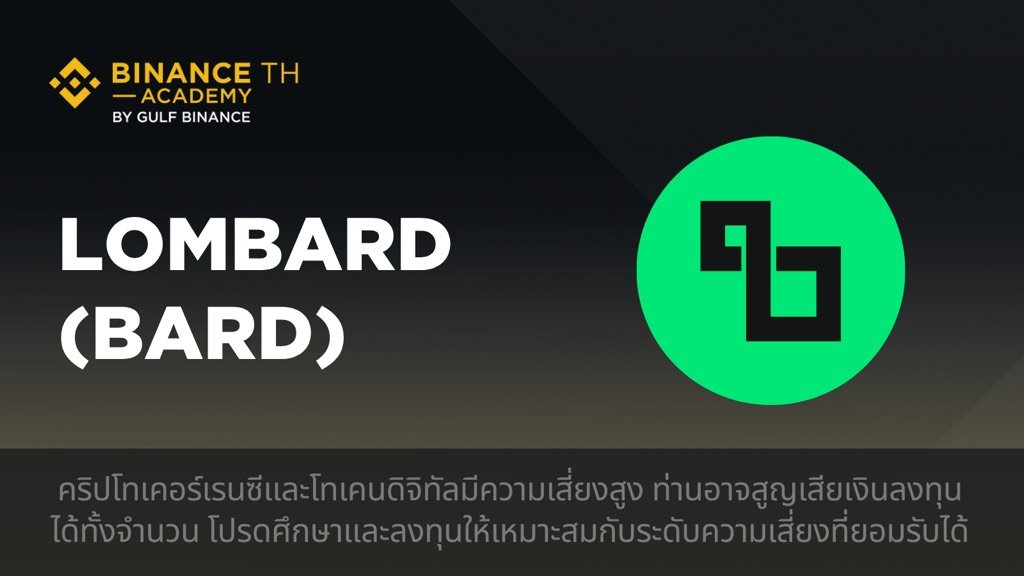What is Lombard (BARD)?

It’s undeniable that Bitcoin is the number one cryptocurrency in the market, but unfortunately, holders can’t make it actively generate yield.
Lombard is a Bitcoin infrastructure protocol designed to enable Liquid Staking via the LBTC token, support Cross-chain Integration, and give users access to yield strategies for their Bitcoin holdings.
What is LBTC
LBTC is a tokenized version of Bitcoin backed 1:1 by native BTC, but unlike Wrapped Bitcoin (wBTC), LBTC is yield-bearing. When users stake BTC through Lombard, it’s connected to Babylon’s Bitcoin Staking Protocol, allowing rewards to accrue over time, increasing the value of LBTC.
LBTC is also usable across multiple blockchains, allowing holders to participate in DeFi activities such as lending, borrowing, or providing liquidity while maintaining full exposure to Bitcoin.
How Lombard Works
Staking through Babylon
Lombard is built on Babylon’s Bitcoin Staking Protocol, allowing BTC holders to delegate their stake to help secure Proof of Stake (PoS) networks without moving their BTC off-chain.
This setup lets holders earn staking rewards while their BTC remains on-chain and secure.
When BTC is deposited into Lombard, it is staked via Babylon to generate rewards in various tokens. These rewards are sold on liquid markets and converted back into BTC, which is added to the reserves.
Over time, reserves may hold more BTC than LBTC in circulation, so the protocol periodically adjusts the reserve ratio to balance LBTC minting and redemption. This ensures LBTC is fully backed by Bitcoin while capturing staking rewards, balancing Bitcoin security with DeFi yield potential.
Lombard Security Consortium
The Lombard Security Consortium is a group of independent members responsible for verifying the network’s core operations, including deposits, redemptions, staking, and reward management.
The consortium also manages the Lombard Ledger, a dedicated blockchain that records all transactions and governance decisions.
The ledger is verifiable and auditable, providing transparency for all protocol activities. Decisions require agreement from multiple parties, reducing reliance on any single actor and ensuring trustworthy LBTC management.
Steps to Stake with Lombard
Deposit BTC:
Send BTC to a unique address generated by Lombard, selecting the blockchain where you want to receive LBTC.Mint LBTC:
Once the deposit is confirmed, the protocol issues LBTC on the selected chain. LBTC represents the staked Bitcoin while remaining liquid and usable in DeFi.Generate Rewards:
BTC is staked through Babylon’s protocol to secure PoS networks and earn rewards in different tokens.Convert Rewards:
Rewards are sold on liquid markets and converted into additional BTC, which is added to the system reserves.Redeem BTC:
To unstake, LBTC is burned. After the withdrawal period, BTC is returned based on the current reserve ratio.
Key Features
DeFi Marketplace
A hub of Bitcoin investment opportunities across multiple blockchains, including lending, borrowing, liquidity provision, and yield vaults, all in one dashboard. Users can filter by chain, protocol, or risk level. Every strategy is reviewed with DeFi partners.
Vault Strategies
Lombard vaults automatically deploy LBTC across DeFi protocols such as liquidity provision, lending, or yield farming. The team actively manages the vaults, rebalances them over time, compounds rewards, and adapts to market conditions.
Vaults come in different types: some focus on low-risk, sustainable, cross-chain returns, while others target higher-yield new protocols, giving LBTC holders diversified access to yield without manual management.
Risks
Before using Lombard, users should understand the main risks such as Slashing Risk If a validator fails, staked BTC may be reduced, Unstaking Period The 9-day withdrawal period exposes users to potential price volatility.,Depeg Risk LBTC market price may diverge from the BTC it represents, affecting redemption and Vault Risk Vault returns depend on the performance of the underlying DeFi protocols and may be lower than expected or result in losses.
BARD Token
BARD is Lombard’s native token used within the ecosystem:
Governance: Holders can vote on fee policies, product development, and ecosystem grants under the Lombard’s Liquid Bitcoin Foundation.
Security: Staking BARD secures the LBTC cross-chain bridge and Lombard Ledger.
Incentives: Early access to new products with preferential terms.
Staking Rewards: Earn yield and partner protocol incentives; unstaking may take up to 21 days to maintain network stability.
Token Distribution
Core Contributors: 35%
Early Investors: 25%
Liquid Bitcoin Foundation: 20%
Other Early Investors: 20%
Max Supply: 1 billion BARD, Circulating Supply: 225 million BARD
Summary
Lombard aims to transform Bitcoin from a passive asset into an active one in on-chain markets. With LBTC, holders can earn rewards via Babylon while keeping liquidity and cross-chain usability. The platform’s vaults and DeFi marketplace make accessing yield strategies easy, without the need for manual management.
